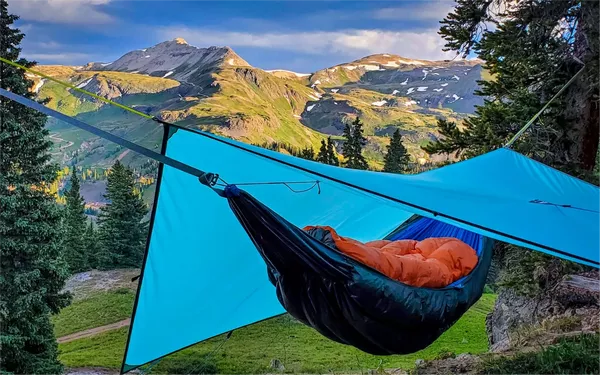Hammock camping has gained significant popularity among outdoor enthusiasts in recent years. The idea of sleeping suspended between trees, surrounded by nature, holds a unique appeal. However, with this rising interest comes the question of safety. Is hammock camping safe? This article delves into the various aspects of hammock camping safety, addressing concerns and highlighting its benefits.
Understanding Hammock Camping
Before delving into safety considerations, it’s essential to understand what hammock camping entails. Unlike traditional tent camping, where you pitch a tent on the ground, hammock camping involves suspending a hammock between two trees or sturdy anchor points. The camper then sleeps in the hammock, often utilizing a tarp or rainfly for protection against the elements.
Assessing Safety Concerns
1. Structural Integrity: One of the primary concerns with hammock camping is the structural integrity of the hammock and suspension system. A well-designed hammock, made from durable materials such as nylon or polyester, coupled with strong suspension straps, can support the weight of an average camper without issues. It’s essential to inspect the hammock and suspension system for any signs of wear or damage before each use.
2. Height and Falling: Another concern is the height at which the camper sleeps. While some may worry about falling from the hammock during the night, the risk is minimal if proper precautions are taken. Campers can mitigate this risk by choosing sturdy anchor points, ensuring the hammock is properly secured, and using a reliable suspension system. Additionally, many campers use a ridgeline or underquilt to prevent accidental rolling out of the hammock.
3. Environmental Considerations: Hammock camping also raises environmental concerns, particularly regarding tree health. Improperly hanging a hammock can damage tree bark and roots, potentially harming the trees. It’s crucial for hammock campers to follow Leave No Trace principles and use tree-friendly suspension systems, such as tree straps, to minimize their environmental impact.
4. Weather and Terrain: Like any outdoor activity, hammock camping safety can be affected by weather conditions and terrain. Campers should be prepared for inclement weather by using a suitable rainfly or tarp to provide shelter from rain and wind. Additionally, choosing appropriate campsites with level ground and sturdy trees or anchor points is essential for a safe and comfortable experience.
Benefits of Hammock Camping
While safety is paramount, hammock camping offers numerous benefits that attract outdoor enthusiasts:
1. Comfort: Many campers find hammock camping to be more comfortable than sleeping on the ground. The gentle rocking motion and ergonomic design of hammocks can promote better sleep and reduce pressure points.
2. Versatility: Hammock camping offers greater versatility in choosing campsites. With the right equipment, campers can set up their hammocks in locations where traditional tents may not be feasible, such as rocky terrain or sloped ground.
3. Portability: Hammocks are generally lighter and more compact than tents, making them ideal for backpackers and minimalist campers who prioritize portability.
4. Connection with Nature: Sleeping suspended between trees allows campers to immerse themselves in nature fully. The unobstructed views and proximity to the natural environment enhance the camping experience.
Tips for Safe Hammock Camping
To ensure a safe and enjoyable hammock camping experience, consider the following tips:
1. Choose Quality Gear: Invest in a high-quality hammock, suspension system, and accessories from reputable brands known for their durability and reliability.
2. Practice Proper Setup: Take the time to learn how to properly set up your hammock and suspension system, ensuring a secure and stable sleeping environment.
3. Inspect Regularly: Before each camping trip, inspect your hammock, suspension straps, and other gear for any signs of wear or damage. Replace any worn or damaged components to maintain safety.
4. Follow Leave No Trace Principles: Minimize your environmental impact by using tree-friendly suspension systems, packing out all waste, and leaving your campsite as you found it.
5. Be Weather Aware: Stay informed about weather conditions at your camping destination and pack appropriate gear, such as a rainfly or tarp, to protect against rain, wind, and other elements.
6. Practice Safe Sleeping Habits: Avoid excessive movement in the hammock and be mindful of your surroundings to prevent accidental falls or injuries.
Conclusion
Hammock camping can be a safe and rewarding outdoor experience when approached with proper preparation and caution. By investing in quality gear, practicing proper setup techniques, and respecting the natural environment, campers can enjoy all the benefits that hammock camping has to offer while minimizing safety risks. Whether you’re a seasoned outdoor enthusiast or a novice camper, exploring the world of hammock camping can lead to unforgettable adventures amidst the beauty of nature.

